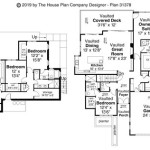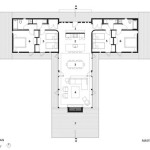How To Do Scale Drawings For Planning Permission
Accurate scale drawings are crucial for planning permission applications. They provide a visual representation of the proposed development, allowing planning officers to assess its impact on the surrounding environment. This article outlines the steps involved in creating scale drawings suitable for submission.
1. Understanding Scale
Scale refers to the ratio between the drawing's dimensions and the actual dimensions of the proposed development. Common scales for planning applications include 1:100, 1:50, and 1:20. A scale of 1:100 means that 1 unit on the drawing represents 100 units in reality. For example, 1 centimeter on the drawing equals 1 meter on the site. Choosing the appropriate scale depends on the size and complexity of the project. Smaller projects like extensions might use a larger scale (e.g., 1:50), while larger developments might utilize a smaller scale (e.g., 1:100).
2. Necessary Equipment
Creating accurate scale drawings requires specific tools. These include:
- Accurate measuring tape: To measure the existing site and structures.
- Scale ruler: A specialized ruler with different scales marked for easy measurement and drawing.
- Drawing board and T-square (optional but recommended for precision): These aid in keeping lines straight and maintaining accuracy.
- Drawing paper: High-quality paper suitable for detailed drawing.
- Pencils, erasers, and a sharpener: For sketching and refining the drawing.
- CAD software (optional): Computer-aided design software can simplify the process, especially for complex projects, and ensure high accuracy.
3. Site Survey and Measurements
Before commencing the drawing, a thorough site survey is essential. This involves accurately measuring the existing site boundaries, buildings, trees, and any other relevant features. Record all measurements meticulously, noting their location and relationship to other elements. This information forms the basis of the scale drawing. Double-checking measurements is vital to avoid errors that can impact the planning process.
4. Creating the Drawing
Begin by drawing the site boundaries using the chosen scale. Accurately plot the existing features based on the site survey measurements. Then, draw the proposed development, ensuring its dimensions and location are precisely represented according to the chosen scale. Clearly label all elements, including dimensions, room names, and materials. Maintaining consistent line weights and using appropriate symbols for different features enhances clarity and readability.
5. Including Key Information
Scale drawings for planning permission must include specific information. Clearly indicate the north point on the drawing. Display the chosen scale prominently. Include a title block containing the project address, drawing title, date, and the name and contact details of the applicant or architect. If the project involves different floor levels, separate scale drawings for each floor are required.
6. Different Types of Drawings Required
Planning applications typically necessitate several types of scale drawings. These commonly include:
- Site plan: Shows the location of the proposed development within the site boundaries, including existing features and landscaping.
- Floor plans: Illustrate the internal layout of each floor of the proposed building, showing room dimensions and locations of doors, windows, and fixtures.
- Elevations: Show the external appearance of the proposed building from different angles, indicating heights, materials, and architectural details.
- Cross-sections: Provide cutaway views of the building, showing the internal structure and height relationships.
7. Digital vs. Hand-Drawn Drawings
While hand-drawn scale drawings are acceptable, digital drawings created using CAD software are increasingly common. CAD software offers several advantages, including higher accuracy, easier editing, and the ability to generate 3D models. Regardless of the method chosen, the drawings must be clear, accurate, and conform to the planning authority's requirements. Check with your local planning authority for specific guidelines regarding acceptable drawing formats and submission methods.
Producing accurate and detailed scale drawings is an integral part of the planning permission process. By following these steps and ensuring all necessary information is included, applicants can increase the likelihood of a successful application.

Producing Drawings For Planning Permission S

Planning Drawings

Planning Drawings

Step By Guide To Your Simple Construction Projects Do I Need Planning Permission

How To Get Planning Permission

Planning Drawings

Planning Drawings

Planning Drawings

Planning Drawings

Planning Drawings Prime Stables
Related Posts








